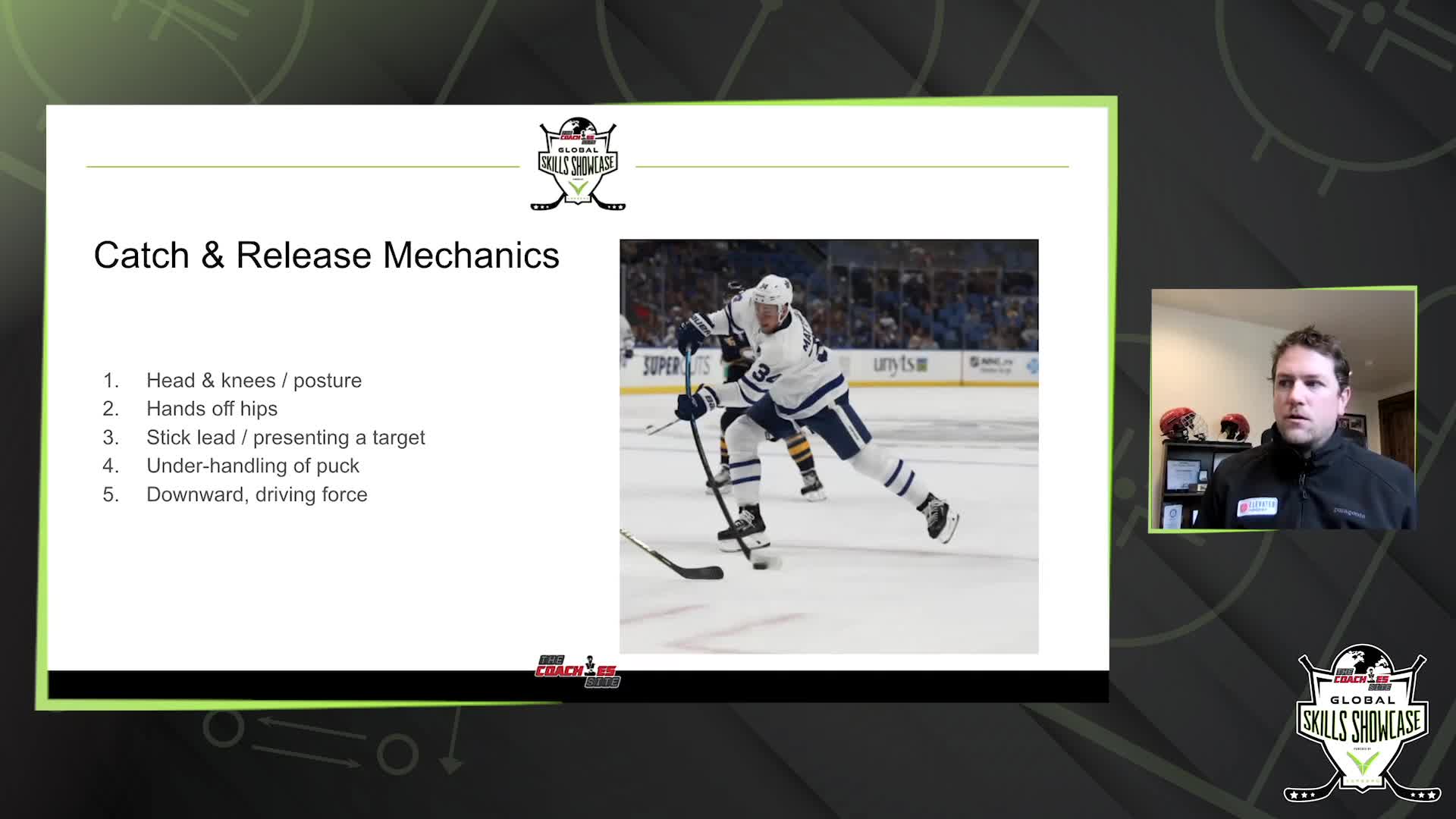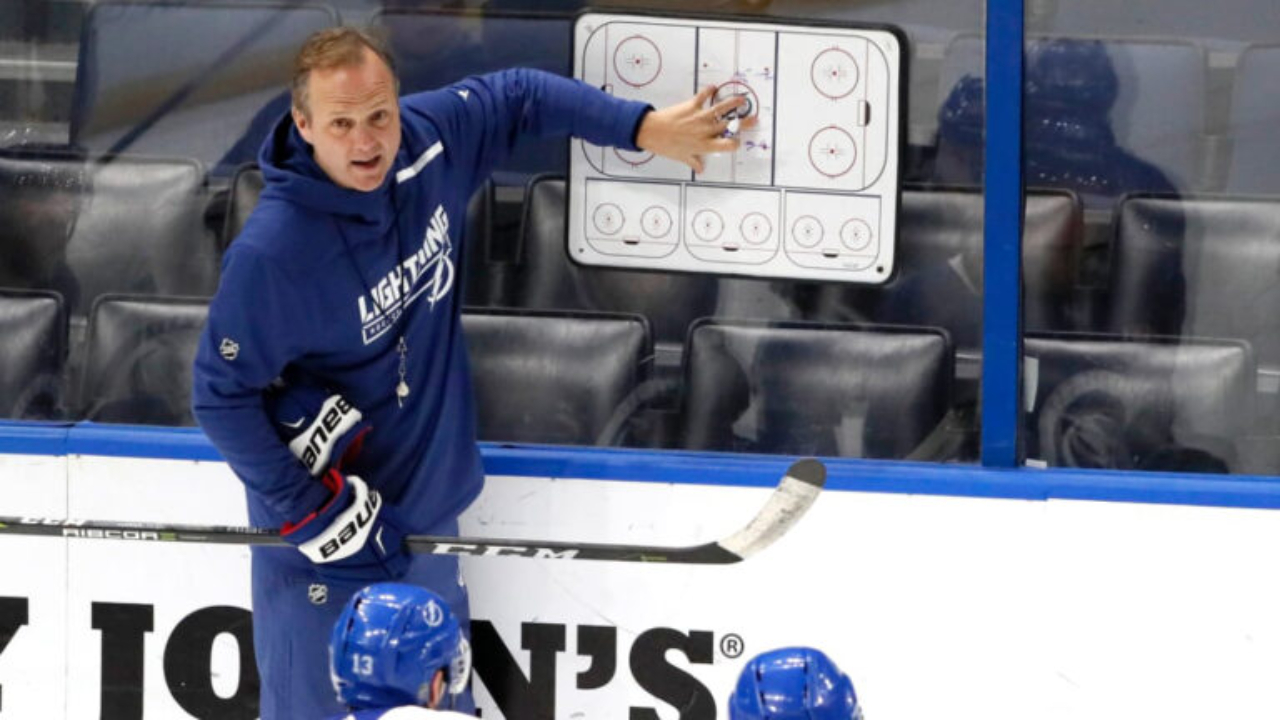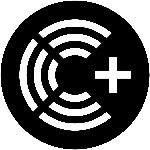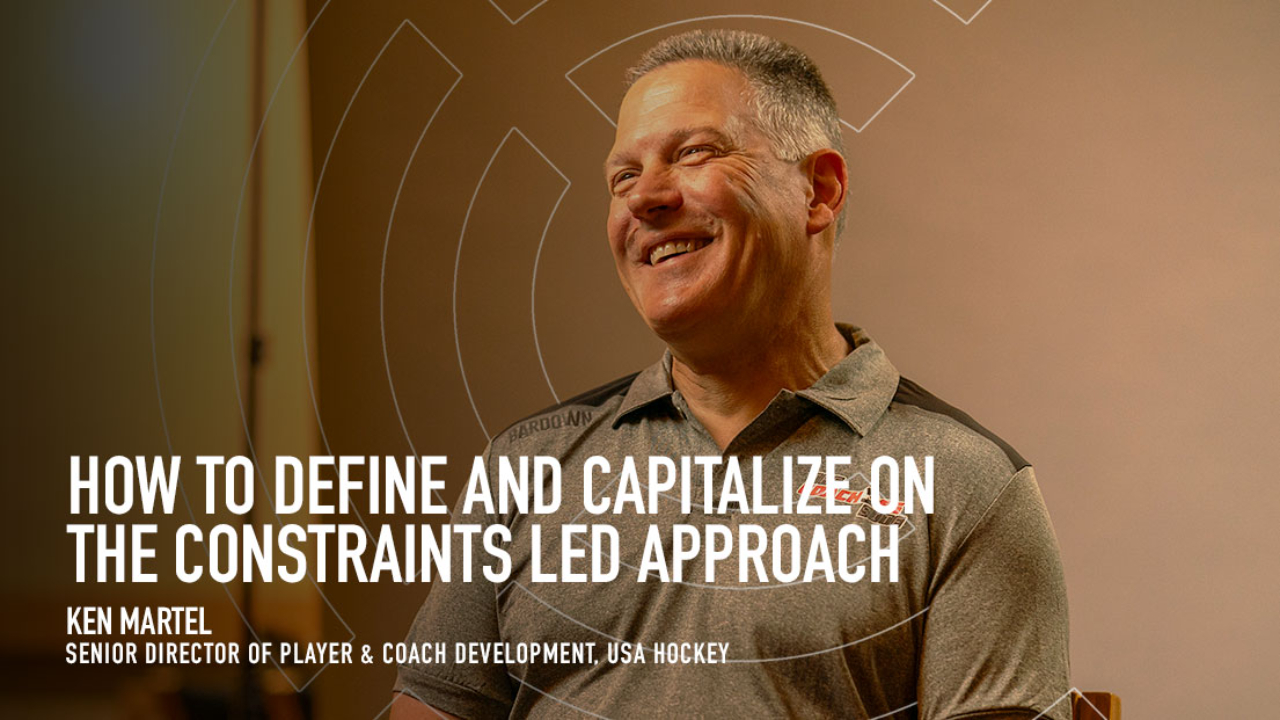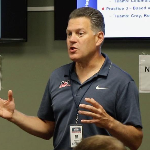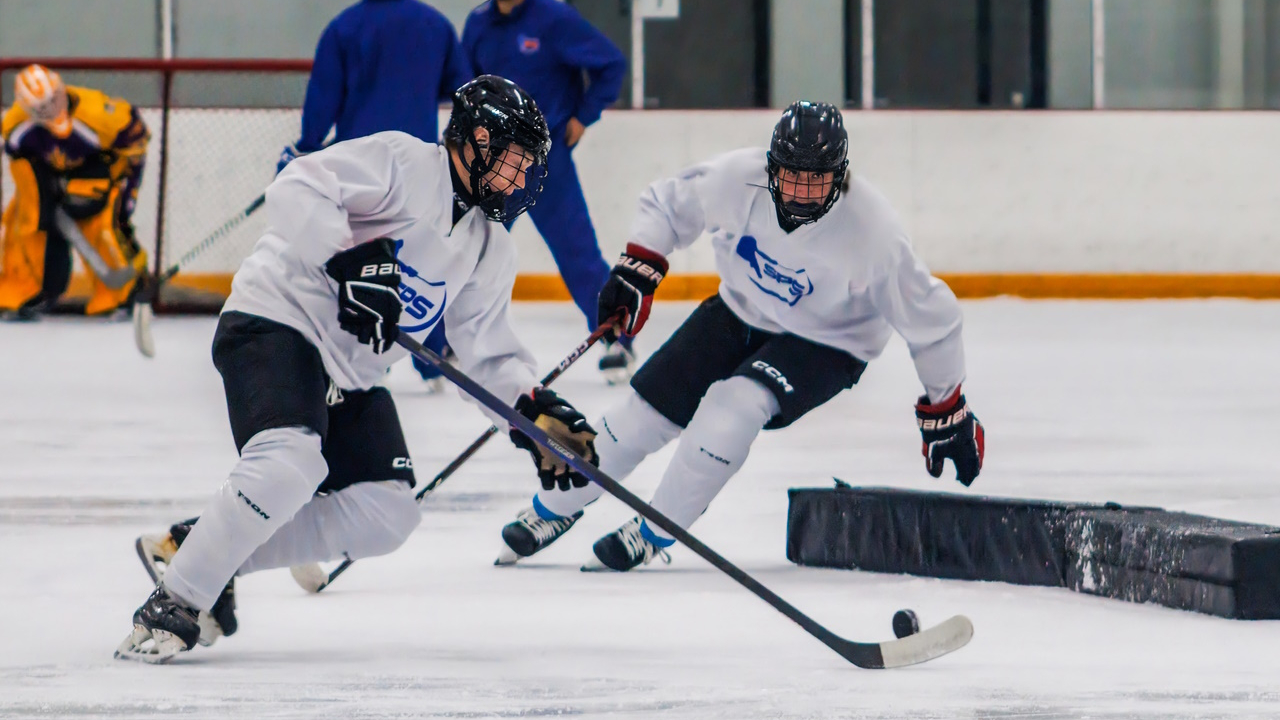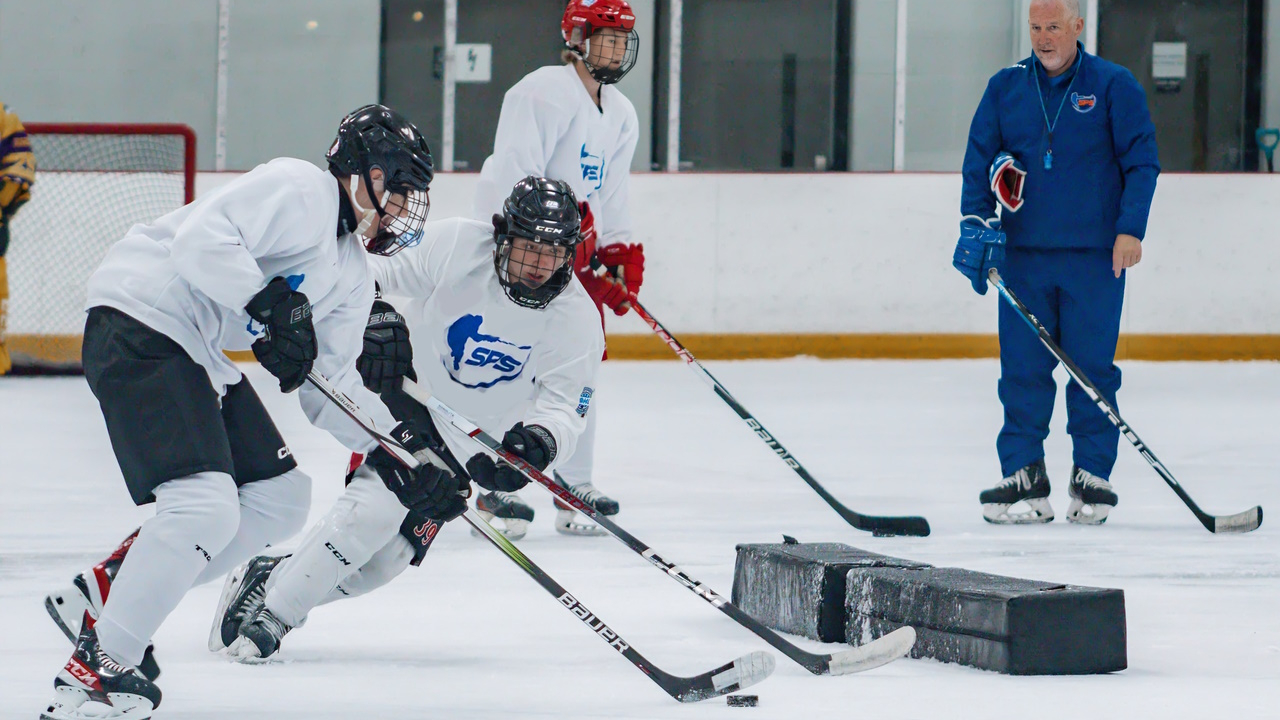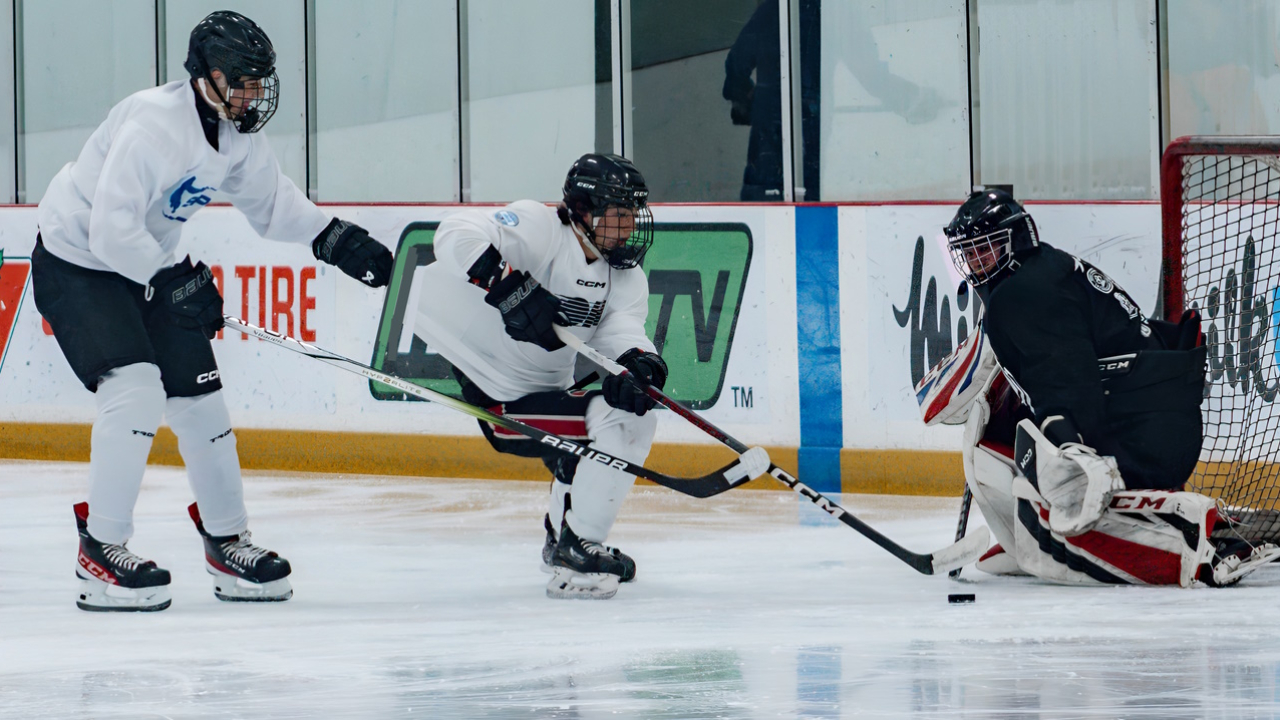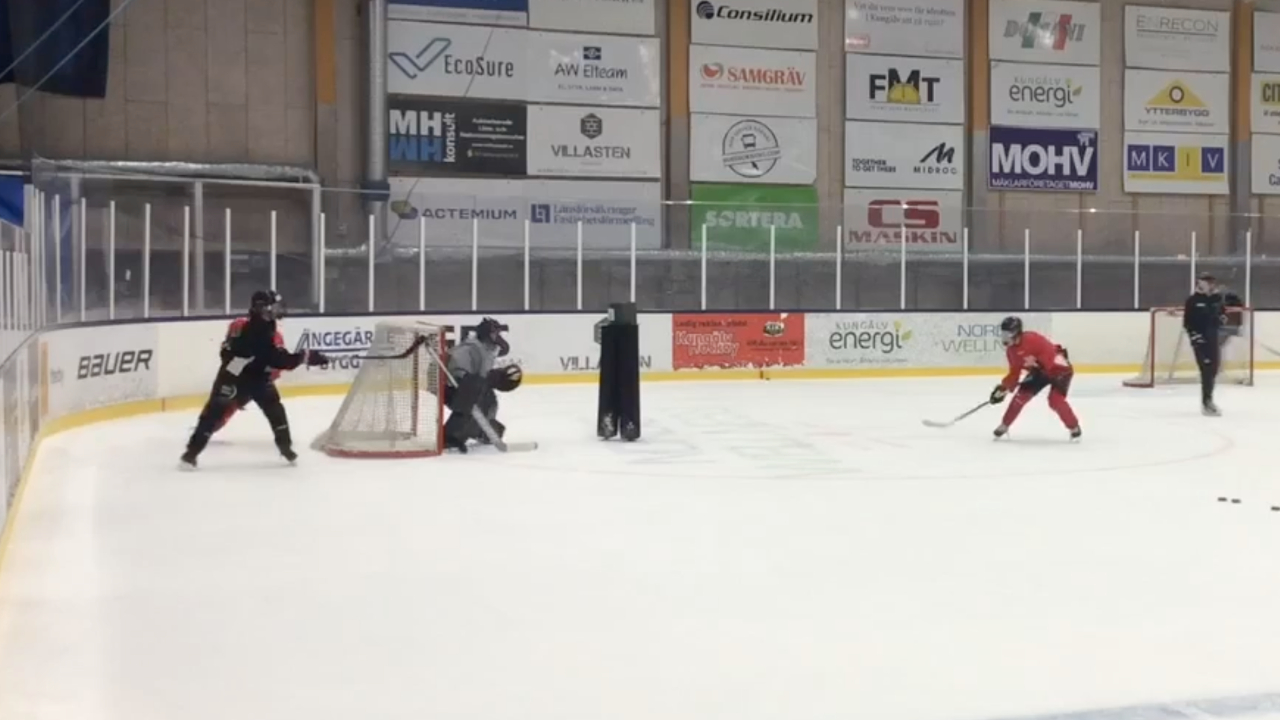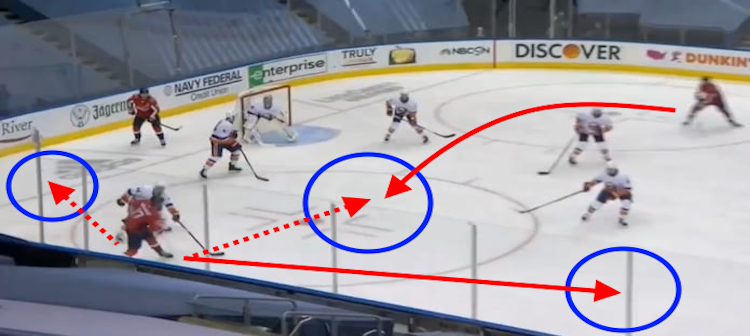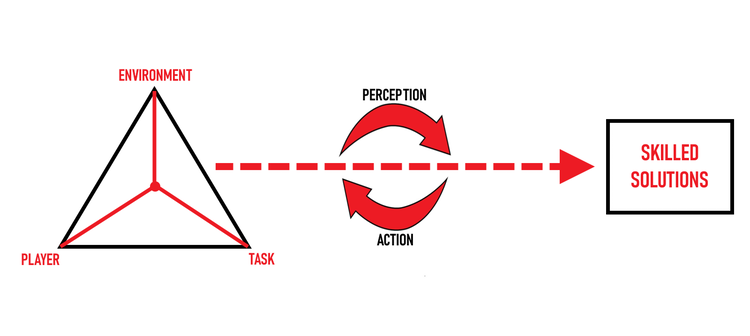
The Constraints Led Approach (CLA) is a skill acquisition coaching methodology. It makes use of constraint manipulation to create ever changing and dynamic learning activities that develop skill in players through exploration and problem solving.
In a CLA, constraints are not negative barriers or limiters that remove opportunities for action from players. Rather, they are sources of information, which provide players opportunities to act. We refer to these opportunities to act as affordances. Therefore, in a CLA, we use constraints to afford opportunities for players, not take them away.
We categorize constraints as one of three types. Player constraints, environment constraints or task constraints. As a hockey coach, you have greatest control over the creation and manipulation of constraints within the activities you design for practice sessions. These would be task constraints. Player constraints (height, weight, size) and environment constraints (lighting, noise, ice condition) are usually out of our control.
Viewing constraints as sources of information is one aspect of this methodology that makes it so powerful. Our objective is to develop skilled players. A large part of being skilled is the ability to solve problems, and problems are presented to players via information they collect. Therefore, working with a methodology based on creating and manipulating sources of information should help players develop into skilled players capable of solving problems.
But we are not interested in just any problems. The greatest benefits will be realized when players are solving real game problems. This is the skillfulness we seek and the skillfulness that transfers. Therefore, using a CLA within representative learning designs that expose players to elements and problems from the game is where we find the greatest impact to skill development. Perception and action remain coupled in this combination and the objective becomes repeating the search for solutions rather than repeating a single solution.
How the CLA Works
We have established that within representative practice activities there are sources of information (i.e. task constraints). The number of players, the intention/objective, puck location, player locations, space, location in the zone, are examples. These constraints can create problems for players to solve. A CLA allows the coach to change or manipulate these constraints and by doing so change sources of information.
There are a couple important points to remember. First, we are not trying to change the problem when we manipulate task constraints. We are simply changing the sources of information or how the player may perceive the sources of information. We want players to learn to solve problems many ways and we want players to learn how to perceive the same problem in the many ways the game may present it. This differs from the concept of drill progressions. In many drill progressions the problem is changed. With a CLA we preserve the problem thus allowing the player to develop many ways of perceiving it and many ways to solve it. Second, we want constraints to afford the players opportunities to learn what the activity is intended to teach. Constraints should afford the players the opportunity to act in a way that we desire.
The example below illustrates a practical illustration of putting the CLA into action. The intention within each activity is the same, develop the player’s skill in catching rims and attacking off the boards. It is important to understand that manipulating constraints is not intended to change the intention of the activity. The intention for manipulating constraints is to afford players opportunities to seek out and create various solutions to the problems in the activity.
Starting Setup:
· The setup represents a common game situation. An east-west rim, or rim release, requiring a player to catch that rim, possess the puck and get off the boards in possession while under pressure.
· The problem for that player is clear…find and move to space and escape the pressure.
· This common problem is presented in each activity in this series, and we will use a CLA to help players discover various solutions to that problem.

1st Constraint Manipulation
· WHAT: Change the location of F2 and D1.
· WHY: Changing the starting location changes the space perception for F2. Moving on different routes now impacts scanning, perceiving D1’s route/angle and perceiving the space D1 takes away.

2nd Constraint Manipulation
· WHAT: Change the starting location of the rim and starting locations of F2 and D1.
· WHY: F2 and D1 close together impacts the time and space for F2. The longer rim could change the speed of the puck which could impact F2s time. There will be close contact at the rim reception creating immediate pressure and reduction in space for F2.

3rd Constraint Manipulation (we move back to the starting setup)
· WHAT: Allow F1 to join as a support offensive player above the puck.
· WHY: Adding a player provides F2 new perceptions and potentially new solutions to space problems. F2 may now be able to create solutions to the space problem that allow him to use F1.

4th Constraint Manipulation
· WHAT: Change the route F1 takes to support F2.
· WHY: It creates a new source of information for F2 and potential solutions to combat the pressure and space reduction caused by D1.

Conclusion
A player’s ability to perceive the game environment, identify a problem and create a variety of solutions to that problem is the benchmark of skillfulness. We want our players to be great problem solvers. But we do not just want them to have one solution per problem. Therefore, just like players, we now have a problem to solve, and we need more then one way to solve it.
The CLA provides a solution. With its central focus on identifying sources of information and then manipulating those sources of information to guide players in finding and creating solutions to problems, we can address the primary outcome of developing skilled players. The CLA is a most effective tool in addressing both skill development and hockey sense.

